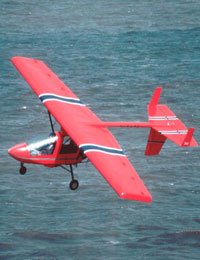www.davidcookaviator.com
 |
DAVID COOK AVIATOR |
 |
THE COOK THEORY OF FLIGHT
Those hoping to learn the principles of flight have always first been introduced to the eighteenth century Swiss physicist, Daniel Bernoulli whose work on fluid dynamics has been used (and mis-used) in the instruction of pilots and engineers since the dawn of aviation.
It is generally taught and accepted that the achievement of flight is due almost entirely to the acceleration of air over the upper surface of an airfoil causing a decrease of pressure above the wing and, therefore, lift. It can be easily shown that this venturi effect does indeed happen (as Bernoulli demonstrated using fluids) but it seems obvious that this is insufficient by itself for flight.
A quick example shows that the wing area of a Boeing 747-100B is 5,000 sq.ft. and that the maximum take-off weight is 735,000lbs. Clearly the entire surface of the wing cannot be involved in creating lift but if even 50% of the wing surface actually contributes, then each square foot of the wing would need to contribute 268 lb of lift. Even if the entire wing surface contributed to lift then 735,000 divided by 5,500 is 134 lbs of lift per square foot. Just accelerating air above the wing surface cannot produce figures of lift such as this.
When I designed the airfoil section for the wing of the CFM Shadow series of aircraft I paid no attention to the theory of Bernoulli's principle as, though his principles are undoubtedly correct, they are clearly only a small part of how lift is generated and flight achieved. Certainly the standard explanations given in principles of flight classes fall far short of the truth.
My Shadow series wings have all the emphasis on the first 25% chord and aft is simply a straight line to the trailing edge. It has a drooped leading edge - as had the VJ23 rigid hang glider wing designed by the American aeronautical engineer, Irv Culver. In my discussions with Irv Culver I found that we both had similar, although controversial, views concerning aerodynamics and flight. Both of us delighted in saying that we had no aeronautical academic qualifications; which meant that we had to think for ourselves. The resulting Shadow wing has no defined stall and the CAA, after they flight tested it, allowed the term 'spin resistant'. With over 400 of these aircraft flying for over 30 years - not a single spin has occurred.
We agreed that flight is the result of the downward pressure of air due to an 'Angle of Attack'. Every wing has to have an angle of attack. The reason for the airfoil shape is to lessen drag. A flat surface on a model will fly without an airfoil shape but it needs an angle of attack. The model would fly much more efficiently with a curve on its upper surface because there is less drag. Air above the wing is less turbulent following the curved shape. Much sought after laminar flow wing sections have little to do with lift - it is to lessen turbulent airflow thereby reducing drag.
John Dickenson OAM BA psych FAI DIP is an accomplished aerodynamicist living in Australia Dickinson invented the flex wing hang glider in 1963. He uses the analogy of the water ski supporting its load through exerting a downward pressure on water and this is the same principle as an aircraft pushing down on air. This effect can be seen when an aircraft is flying close to the surface, being in 'ground effect' - appearing to ride on a bubble of air through the downward pressure of air from the wings.
May I suggest that students of flight be given these facts and not the reduction of air pressure on the top surface of a wing is not the fundamental cause of flight.
David G. Cook